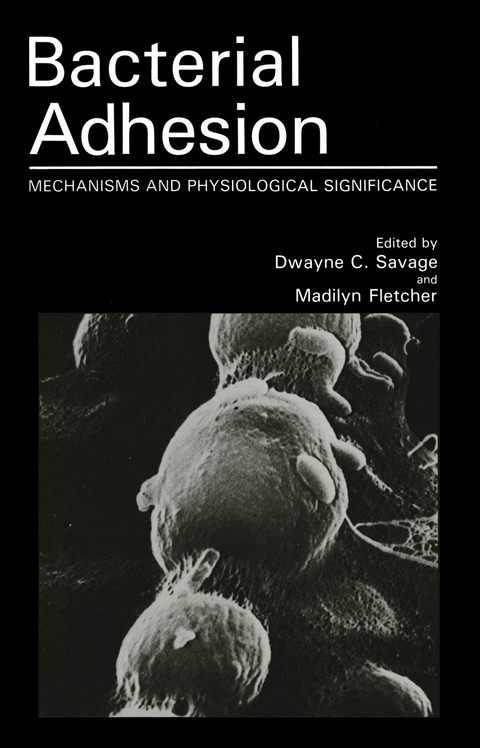
Bacterial Adhesion
Springer-Verlag New York Inc.
978-1-4615-6516-1 (ISBN)
Study of the phenomena of bacterial adhesion to surfaces has accelerated considerably over the past 10 to 15 years. During this period, microbiologists have become increasingly aware that attachment to a substratum influences considerably the activities and structures of microbial cells. Moreover, in many cases attached communities of cells have important effects on their substratum and the surrounding environment. Such phenomena are now known to be important in plant and animal hosts, water and soil ecosystems, and man-made structures and industrial processes. Much work on microbial adhesion in the early 1970s was descriptive. Those studies were important for detecting and describing the phenomena of bacterial adhesion to substrata in various environments; the findings have been presented in numerous recently published, excellent books and reviews. In some studies, attempts were made to elucidate some funda mental principles controlling adhesion processes in different environments containing a variety of microorganisms. Common threads have been observed occasionally in different studies. Taken as a whole, however, the information has revealed that many disparate factors are involved in adhesion processes. Whether a particular microorganism can adhere to a certain substratum depends on the properties of the microbial strain itself and on charac teristics of the substratum and of the environment.
I. Introduction and Description of Surfaces.- 1 Phenomena of Bacterial Adhesion.- 2 Bacterial Cell Walls and Surfaces.- 3 Animal Cell Surface Membranes.- 4 Characteristics of Plant Surfaces.- 5 The Properties of Nonbiological Surfaces and Their Characterization.- II. Mechanisms of Adhesion.- 6 Mechanisms of Bacterial Adhesion at Solid-Water Interfaces.- 7 Mechanisms of Bacterial Adhesion at Gas-Liquid Interfaces.- 8 Mechanisms of Adhesion to Clays, with Reference to Soil Systems.- 9 Mechanisms of Bacterial Adhesion to Plant Surfaces.- 10 Adhesion of Bacteria to Animal Tissues: Complex Mechanisms.- 11 Pilus Adhesins.- III. Consequences of Adhesion.- 12 Effect of Solid Surfaces on the Activity of Attached Bacteria.- 13 Influence of Attachment on Microbial Metabolism and Growth in Aquatic Ecosystems.- 14 Responses of Plant Cells to Adsorbed Bacteria.- 15 Effects on Host Animals of Bacteria Adhering to Epithelial Surfaces.
| Zusatzinfo | XIX, 476 p. |
|---|---|
| Verlagsort | New York, NY |
| Sprache | englisch |
| Maße | 178 x 254 mm |
| Themenwelt | Medizin / Pharmazie ► Medizinische Fachgebiete ► Mikrobiologie / Infektologie / Reisemedizin |
| Medizin / Pharmazie ► Studium | |
| Naturwissenschaften ► Biologie ► Botanik | |
| Naturwissenschaften ► Biologie ► Mikrobiologie / Immunologie | |
| Naturwissenschaften ► Biologie ► Ökologie / Naturschutz | |
| Naturwissenschaften ► Biologie ► Zoologie | |
| ISBN-10 | 1-4615-6516-2 / 1461565162 |
| ISBN-13 | 978-1-4615-6516-1 / 9781461565161 |
| Zustand | Neuware |
| Haben Sie eine Frage zum Produkt? |
aus dem Bereich


